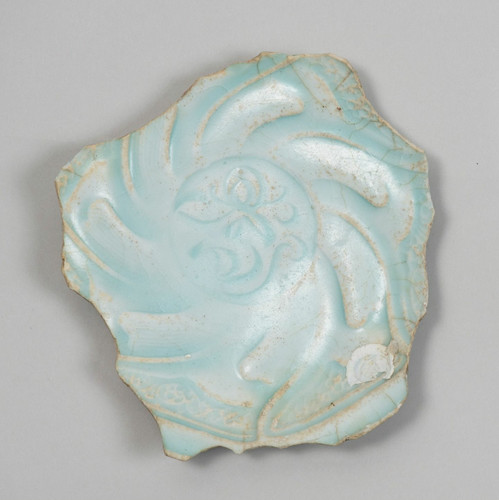What is understood by analyzing ceramics discovered from the sinking ship 800 years ago with the latest equipment?

A cargo ship that seems to have been sunk in the second half of the 12th century, found off the Java island of Indonesia, has found that about 100,000 pieces of ceramics, 200 tons of iron, a small amount of ivory, resin, tin (tin) It has been found out that ingots were piled up. A survey of ceramics lifted from this sinker ship using fluorescent X-ray analysis revealed that various things turned out, the research team of the University of Illinois at Chicago reports.
Sourcing qingbai porcelains from the Java Sea Shipwreck: Compositional analysis using portable XRF - ScienceDirect
https://www.sciencedirect.com/science/article/pii/S0305440318305958
Shipwreck reveals ancient market for knock-off consumer goods | Ars Technica
https://arstechnica.com/science/2019/02/shipwreck-reveals-ancient-market-for-knock-off-consumer-goods/
According to the research team, a large-scale trade route was formed in the latter half of the 12th century from the Indian Ocean to the South China Sea. It was said that this trade route was able to come and go from South Song to East, Japan to the east, Indonesia to the south, Middle East and Africa to the west, the trade boats going through the route were carrying agricultural crops, metal, resin, ceramics etc . In particular, the Chinese white porcelain is considered to be an important export item, and the research team says that Chinese pottery has been found in a wide area from Japan to the east coast of Africa. In addition, hundreds of dragon kilns are found in the hills in the excavation survey in southeastern China.

In order to investigate where the pottery excavated from the sinking ship off the Java Island was baked, it is necessary to analyze the glaze to be applied to the pottery. The research teams by Wenpeng Xu and Lisa Niziolek, who are archaeologists at the University of Illinois at Chicago, have put 60 pieces of pottery debris pulled from a sinking ship on a handheld fluorescent X - ray analyzer.
X-rays are also used for medical use, and when irradiated on a sample, electrons are repelled by the energy. Another electron transits to the hole after the electron is blown off, and fluorescent X-rays are emitted according to the energy level difference. Since the wavelength of this fluorescent X-ray changes depending on the atom, it is possible to analyze the element composition of the sample by examining the wavelength of the fluorescent X-ray emitted by irradiating the X-ray.

Since the glaze varies depending on the area of the kiln, if the elemental composition of the glaze is known, it can be understood in which area the pottery was mainly burned. For example, ceramics glazes in Jiangxi Province's Jingdezhen kiln tend to have more iron and less thorium than those in other areas. Meanwhile, the glaze used in the virtue kiln of Fujian Province has many zinc and thorium, and it seems that iron is small.
When the research team narrowed down to 13 elements such as magnesium · phosphorus · lead · silver · cadmium and compared it, the fragments were classified into 4 groups in total, each of which was divided into 4 kiln sites such as Jingdezhen Kiln and Dezhou Kiln It seems that the characteristics of the toy have been seen. In the latter half of the 12th century blue white porcelain made in Jingdezhen was regarded as the highest grade and it was thought that most exports to foreign countries were baked in Jingdezhen. However, in fact, it became clear that many of the blue white porcelains that had been piled up on the sunken trade boat were burned outside Jingdezhen.

According to the research team, as the popularity of Chinese white porcelain has increased in various parts of the world, trading traders at the time were able to make large quantities of blue white porcelain replicas of Jingdezhen in the kiln near the coastal area It is said that sex is high. Of course, luxury goods burned in Jingdezhen are also exported and thought to be of the upper class, but the research team told that the replicas made in other areas were mainly for the masses I'm watching it.
Mr. Niziolek said that "China's ceramic artists and traders have responded to the needs of consumers with awareness of the global market, as they made and exported large quantities of replicas from kiln sites in different regions." "The complexity of the worldwide trade network is more than expected, I think many people think that trading networks of such a scale can only be modern western capitalism But the ship of this sinking ship breaks down its common sense. "
Related Posts:
in Science, Posted by log1i_yk







